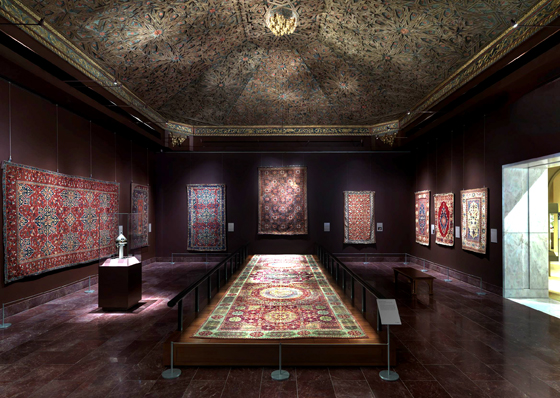Azerbaijani art samples in US museums

By Nigar Orujova
Notwithstanding the long distance, many Azerbaijani art samples are kept in museums all over the United States.
Currently, hundreds of rare art samples, especially handmade ones, are kept at museums in Washington, New York, Chicago, Los Angeles, Houston, San Francisco, Cleveland, Detroit, Boston and other cities, art galleries and private collections.
Azerbaijani art specimens were brought to America by two ways -- trade and archeological excavations.
From the historical point of view the most ancient of the art works kept in the United States are metal items presently exhibited in New York city's Metropolitan Musem of Art and Asian Art Museum of San Francisco.
One of the most prominent art samples kept in the Metropolitan museum is jewelry dated 8-7th centuries BCE. One of them, a golden bracelet, has attracted the greatest attention of art critics.
A lion representation on the bracelet, including lion heads on both sides of it, was made with astonishing accuracy and dynamics.
This art, which has over 3,000 year-long history, reminds of theScythian culture, which widely spread in the territory between the northern part of the Black Sea and the southern part of the Azerbaijani boundaries.
Some sources said the Scythes lived in the territory at that period and made a grand influence upon Azerbaijani political and cultural life. This influence is also reflected in other creations of local craftsmen.
There are many metal art specimens dating back to the Middle Ages in the US museums and private collections, including a bronze dish kept in Cleveland Museum of Art traced to the 12th century.
Also, the art of Azerbaijani carpet weaving is represented in the United States. The ancient Azerbaijani high quality piled and pileless carpets are kept in the Metropolitan Museum in New York.
An Ardabil carpet woven in the 16th century that is 178 centimeters wide and 333 centimeters long represents a battle between predators and grass-eating animals, with a lion, a tiger, a wolf, and a deer seen more vividly.
The carpet's storyline shows that the lion and the tiger tear the deer apart, while other animals, standing in a circle, are watching the fight with colorful flowers and trees in the background.
Another carpet is smaller than the previously mentioned one and is only 107 centimeters wide and 161 centimeters long with an adornment resembling an altar in the center, decorated with flowers and cloud traces.
The clouds have a closed flower bud in the center. The carpet's bottom is decorated with herbal patterns, while the top is covered with religious inscriptions.
The carpet also attracts the viewer with its weaving style, with golden and silver yarn used in the process of its creation. The carpet was given to the museum by American millionaire Isaac Fletcher.
Most of the Azerbaijani carpet weaving tradition is represented by the 18-19th centuries' carpets from Baku, Guba-Shirvan, Ganja-Gazakh and Garabagh regions; these carpets are preserved at museums including those in Philadelphia and Pennsylvania.
The museum in Boston also has a number of fabrics with storylines dating back to the 16th century.
One of these fabrics, woven in Tabriz, was the velvet upper side of a luxurious umbrella. The fabric's composition reminds famous Azerbaijani artist Soltan Mahammad Tabrizi's 'Shah Tahmasb I in the hunt' miniature.
The front part of the circular fabric presents a popular hunting scene where a gazelle is pursued by a horseman, a deer is parted by a lion and there is also a head-to-head fight between a young man and a panther.
